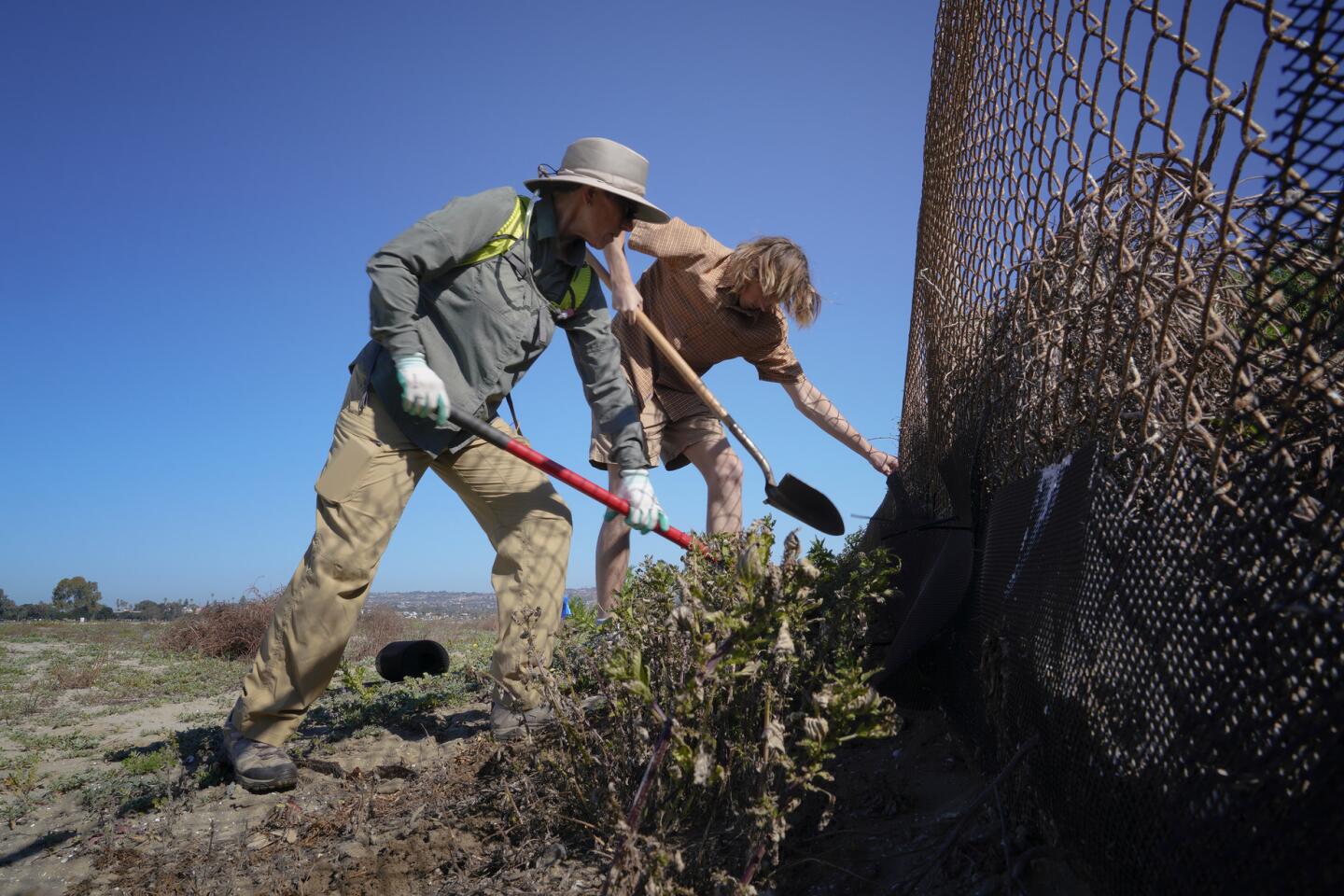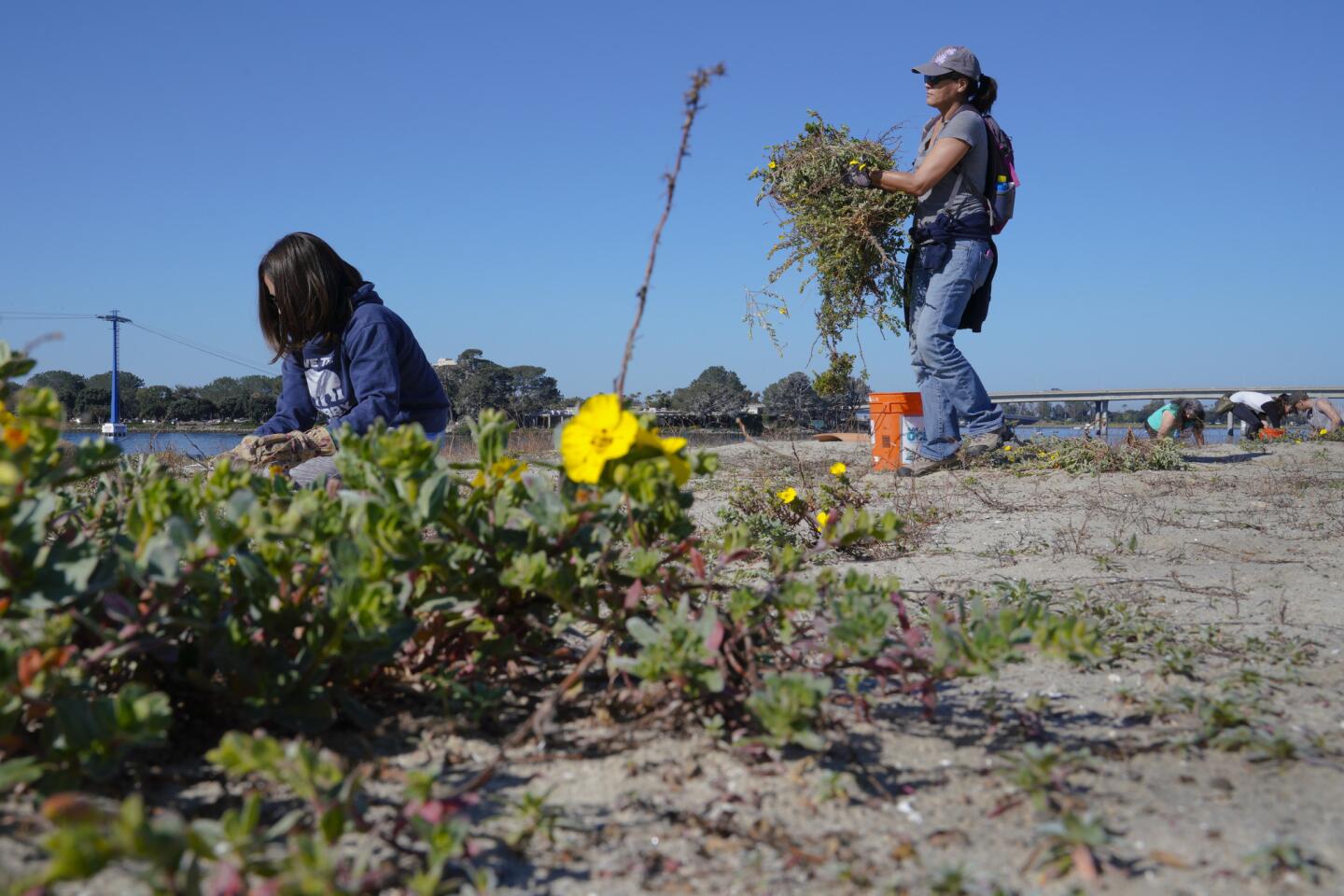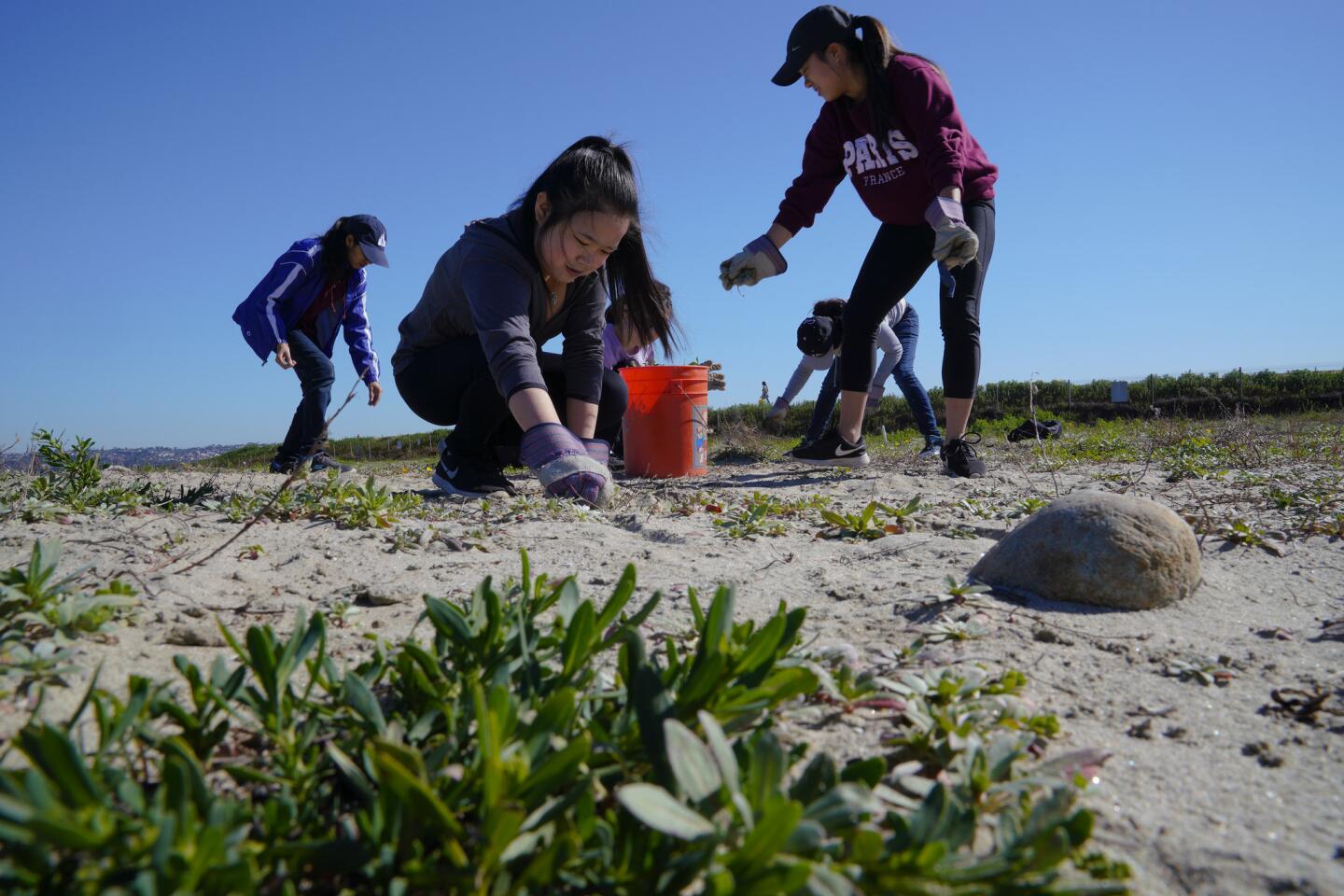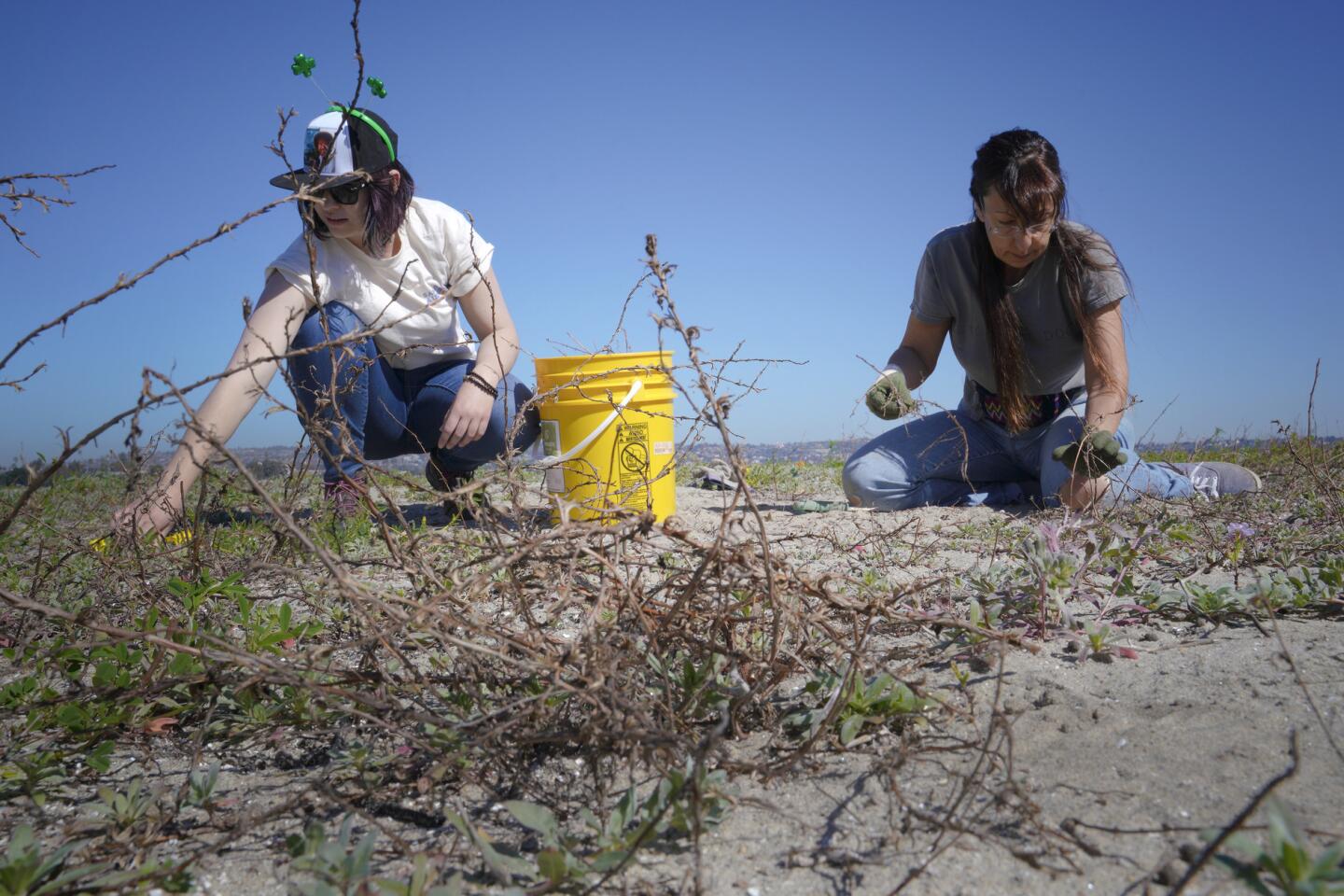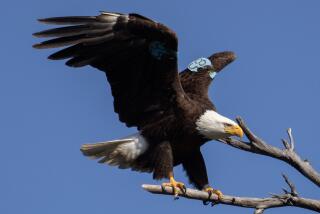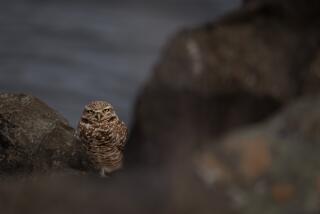On an island in San Diego, an endangered bird species faces tough odds to survive

Drive to Fiesta Island, walk all the way through the dog park on the southwestern end, and you’ll run into a chain link fence with a sign that cautions, “Do not disturb.”
That fence protects one of the last remaining patches of sand dune where the endangered California least tern can nest and nurture its chicks.
But the dune is nearly always overrun by weeds and other plants, and this month’s rains only helped multiply the vegetation.
The more plants there are, the easier it is for crows and ravens to spot the least tern chicks, whose sandy-colored bodies stand out against the green weeds, said Megan Flaherty, restoration program manager for the San Diego Audubon Society. That makes it easier for those predators to eat the chicks and harder for their parents to defend them.

On Sunday, about 40 volunteers chipped away at the carpet of weeds and other plants that have overrun the least terns’ nesting habitat. The San Diego Audubon Society holds these de-weeding projects every year before the least terns’ nesting season.
It’s a time-consuming task — 10 minutes of pulling sweet clover, filaree, primrose and other plants, roots and all, might only clear a few square feet of sand. Filling the air was the white noise of cars driving nearby and the roar of motor boats and personal watercraft tearing up the water in the bay.
“It’s nice to come out here and do some good stuff, instead of staying at home watching sports,” said volunteer Robert Slavey.
The California least tern measures about 9 inches long and has gray and white feathers and a black cap. Each spring, the birds migrate from South America to California’s coastline to breed and raise their chicks until September.
The bird was one of the first animals to be placed on the federal endangered species list when the list was created in 1970. Over time, human development eroded and destroyed much of the dunes they depended on, and beach-goers and their dogs unknowingly trampled their nests and chicks.
There were only a few hundred nesting pairs of least terns in 1970. The population recovered to number in the few thousands by the 2000s, but the birds are again in decline.
In the past, the birds would have had expanses of sandy dunes in which they could pick a nesting spot. Now, because there are so many people, cars and dogs on Fiesta Island, the birds are confined to the same small fenced area, which makes it easier for predators to find them year after year.
Not only have weeds covered the dune like a carpet, but the least terns’ food source, anchovies, are becoming increasingly scarce.
Warming sea water is driving the anchovies farther down into the ocean and making it harder for least terns to get hold of them; in addition, the anchovies are overfished, Flaherty said. San Diego Audubon has been seeing large die-offs of least tern chicks in June because they’re not getting enough food.
Replenishing the dune with more sand would help stave off weeds. But sand is already in limited supply because rivers — which is where sand comes from — have also been altered by human activity. And the limited sand that does exist is more likely to be routed to beaches so that people can continue using them, rather than used to restore bird habitat, Flaherty said.
“We’ve screwed up so many systems,” Flaherty said. “We’re trying to control a system that’s just so changed.”
The least terns are important to conserve because they help connect the ecosystems of the ocean and the coastal dunes, depositing nutrients in the nutrient-poor dunes, Flaherty said.
“In ecology, there’s no such thing as an action without consequences because all parts of the ecosystem are connected,” Flaherty said. “When you start losing lots and lots of parts of the ecosystem, you’re going to unleash a series of other actions that are going to cascade and potentially release catastrophic events.”
Taketa writes for the San Diego Union-Tribune.
kristen.taketa@sduniontribune.com
More to Read
Start your day right
Sign up for Essential California for news, features and recommendations from the L.A. Times and beyond in your inbox six days a week.
You may occasionally receive promotional content from the Los Angeles Times.


